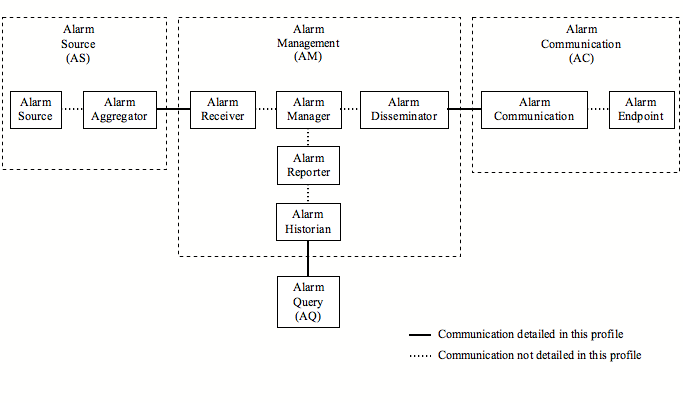PCD Alarm Communication Management
Alarm Communication Management (ACM) defines the communication of alarms throughout the healthcare enterprise.
Summary
This supplement defines the communication of alarms from alarm source systems to alarm management systems and from alarm management systems to alarm historical systems. This supplement provides for alarm dissemination between alarm source devices and systems, from the connector to and within the communication services to the required abstract semantics, in a manner that, if complied with, enables multi-vendor multi-modality interoperation. The intended use of the IHE PCD Alarm Communications Management Profile to serve in communication of alarm information from patient care devices to an alarm management system communicating with secondary means of notification to caregivers. Typical secondary notification means would be annunciators, pagers, and smart phones.
Benefits
- Allows centralization of alarms
- Improves caregiver response time to alarms
- Reduces alarm confusion
- Reduces noise levels in care environment
- Allows alarm histories to be reviewed and managed
- Improves safety by delivering alarms to the appropriate personnel
Details
Systems Affected
- Alarm Sources: Any device that can generate an alarm
- Alarm Communication Management systems
- EMR, CIS
Actors and Transasctions
- Alarm Source (AS)
- Alarm Manager (AM)
- Alarm Communicator (AC)
- Alarm Query (AQ)
- PCD-04: Report Alarm
- PCD-05: Report Alarm Status
- PCD-06: Disseminate Alarm
- PCD-07: Report Dissemeniate Alarm Status
- PCD-08: Subscribe to Alarm
Specification
Profile Status: Trial Implmementation
Documents:
Underlying Standards:
- HL7 version 2.6
- IEC 60601-1-8 Alarm Management
- ISO/IEEE 11073-10201 Domain Information Model
- ISO/IEEE 11073-10101 Nomenclature
- ISO/IEEE 11073-20101 Application Profile – Base Standard
- CEN env13735 (and in process equivalents – 11073-202xx)
- ISO/IEEE 11073-30200 Transport Profile – Cable Connected
- ISO/IEEE 11073-30300 Transport Profile – Infrared (incl. TCP/IP & UDP/IP Access Point specification)
See Also
<The following sections can be left out if there is nothing to point to. This is just to show where such information can go.>
Related Profiles
<List profiles this one depends on, profiles that depend on this one, profiles that are synergistic with this one. Start with the name of the other profile as a link and then explain the relationship.>
Reference Articles
- ACCE Healthcare Technology Foundation “Impact of Clinical Alarms on Patient Safety” [1]
- ECRI Institute “The Hazards of Alarm Overload” [2]
This page is based on the Profile Overview Template
